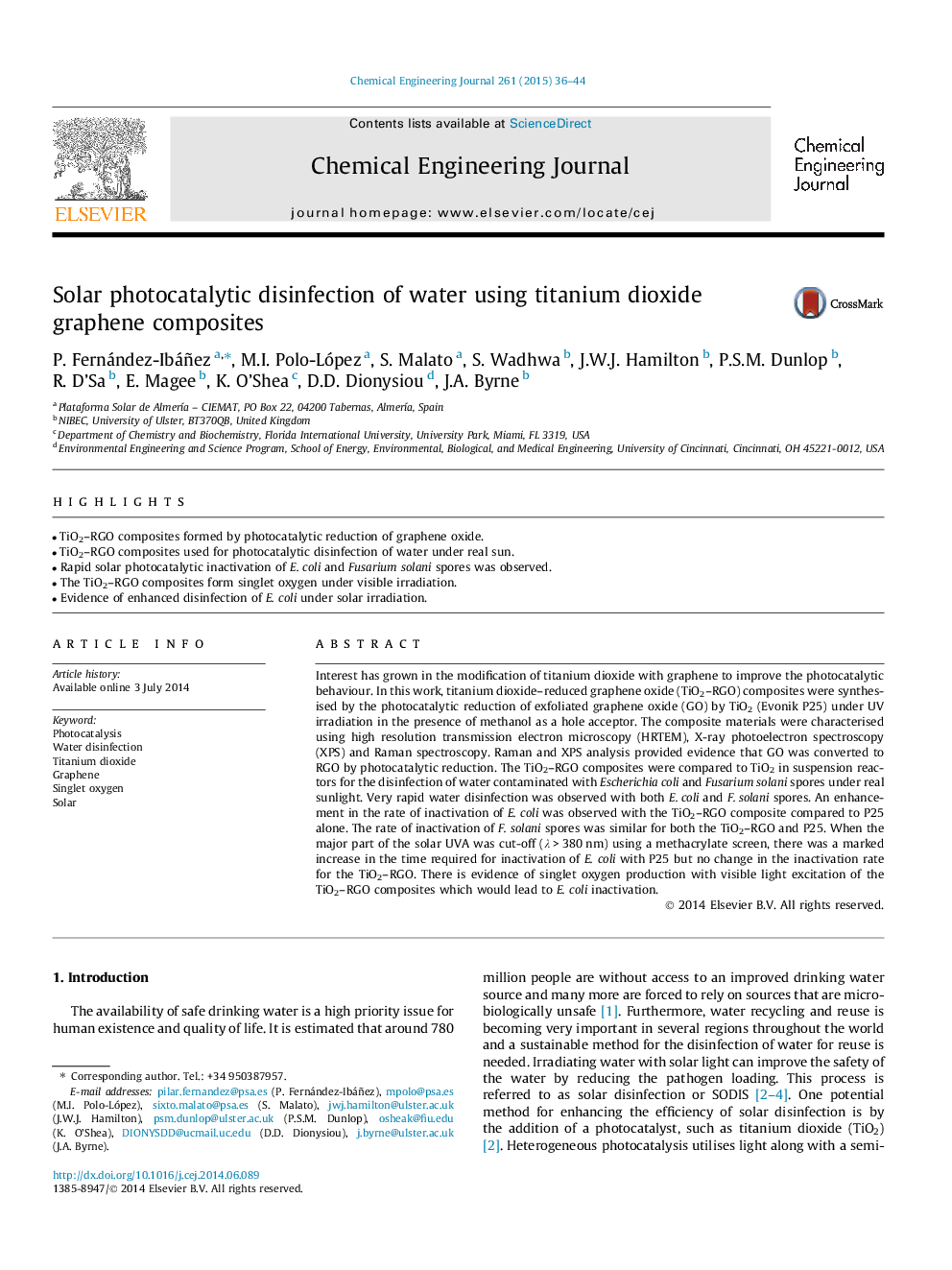| کد مقاله | کد نشریه | سال انتشار | مقاله انگلیسی | نسخه تمام متن |
|---|---|---|---|---|
| 146925 | 456381 | 2015 | 9 صفحه PDF | دانلود رایگان |
• TiO2–RGO composites formed by photocatalytic reduction of graphene oxide.
• TiO2–RGO composites used for photocatalytic disinfection of water under real sun.
• Rapid solar photocatalytic inactivation of E. coli and Fusarium solani spores was observed.
• The TiO2–RGO composites form singlet oxygen under visible irradiation.
• Evidence of enhanced disinfection of E. coli under solar irradiation.
Interest has grown in the modification of titanium dioxide with graphene to improve the photocatalytic behaviour. In this work, titanium dioxide–reduced graphene oxide (TiO2–RGO) composites were synthesised by the photocatalytic reduction of exfoliated graphene oxide (GO) by TiO2 (Evonik P25) under UV irradiation in the presence of methanol as a hole acceptor. The composite materials were characterised using high resolution transmission electron microscopy (HRTEM), X-ray photoelectron spectroscopy (XPS) and Raman spectroscopy. Raman and XPS analysis provided evidence that GO was converted to RGO by photocatalytic reduction. The TiO2–RGO composites were compared to TiO2 in suspension reactors for the disinfection of water contaminated with Escherichia coli and Fusarium solani spores under real sunlight. Very rapid water disinfection was observed with both E. coli and F. solani spores. An enhancement in the rate of inactivation of E. coli was observed with the TiO2–RGO composite compared to P25 alone. The rate of inactivation of F. solani spores was similar for both the TiO2–RGO and P25. When the major part of the solar UVA was cut-off (λ > 380 nm) using a methacrylate screen, there was a marked increase in the time required for inactivation of E. coli with P25 but no change in the inactivation rate for the TiO2–RGO. There is evidence of singlet oxygen production with visible light excitation of the TiO2–RGO composites which would lead to E. coli inactivation.
Journal: Chemical Engineering Journal - Volume 261, 1 February 2015, Pages 36–44
